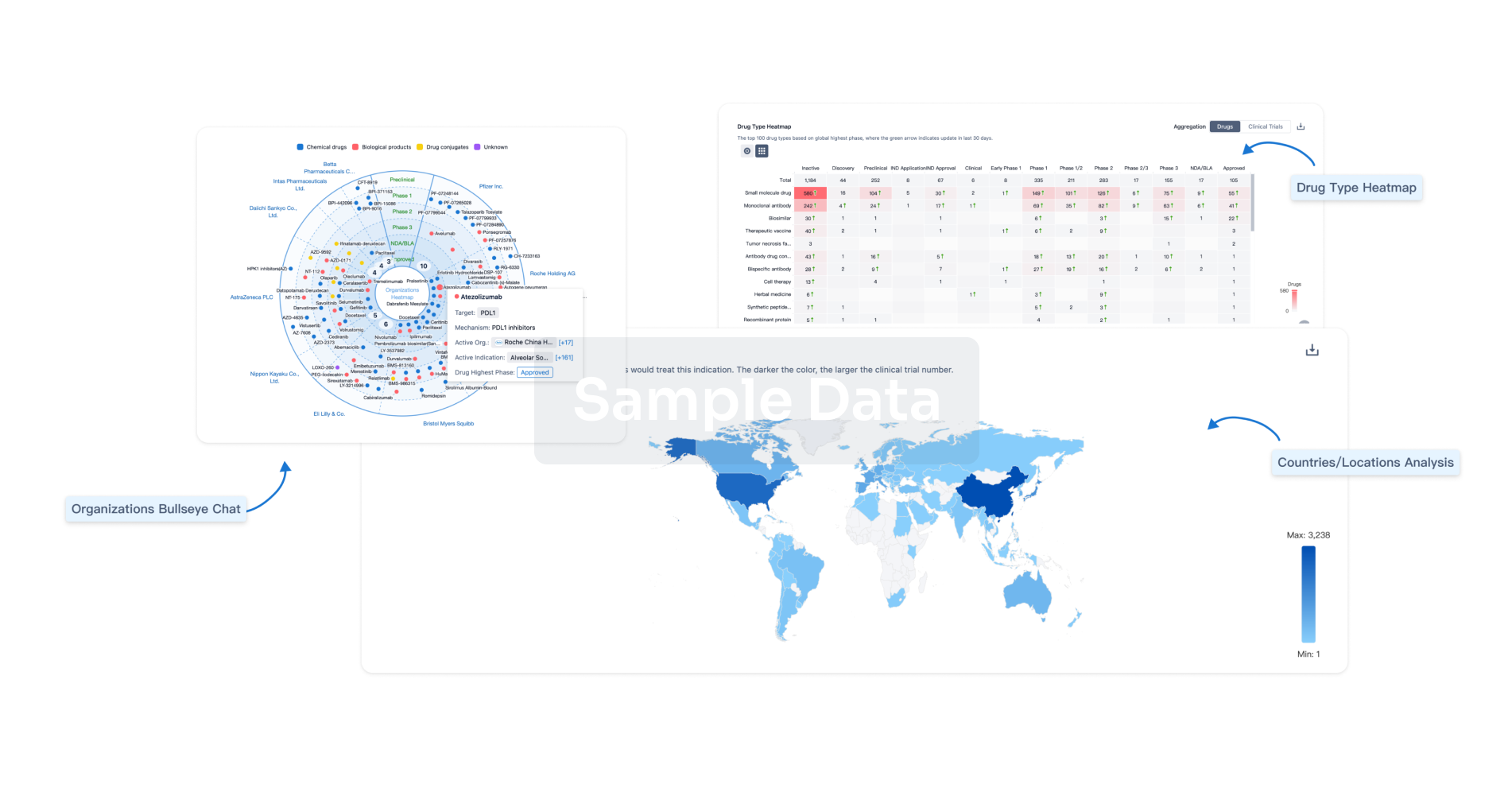Request Demo
Last update 08 May 2025
Urethral Infection
Last update 08 May 2025
Basic Info
Synonyms Urethral Infection, Urethral infection, Urethral infection (diagnosis) + [5] |
Introduction A bacterial, viral, or fungal infectious process affecting the urethra. |
Related
5
Drugs associated with Urethral InfectionMechanism Bacterial DNA gyrase inhibitors [+1] |
Active Org. |
Originator Org. |
Active Indication |
Inactive Indication |
Drug Highest PhaseApproved |
First Approval Ctry. / Loc. Japan |
First Approval Date25 Jan 2008 |
Target |
Mechanism PBPs inhibitors [+1] |
Active Org. |
Originator Org. |
Active Indication |
Inactive Indication- |
Drug Highest PhaseApproved |
First Approval Ctry. / Loc. Japan |
First Approval Date01 Aug 1995 |
Target |
Mechanism PBPs inhibitors [+1] |
Originator Org. |
Active Indication |
Inactive Indication |
Drug Highest PhasePhase 1 |
First Approval Ctry. / Loc. United States |
First Approval Date24 May 1984 |
24
Clinical Trials associated with Urethral InfectionCTR20250638
环丝氨酸胶囊在健康受试者中空腹给药条件下随机、开放、单剂量、两制剂、两序列、两周期、双交叉生物等效性试验
[Translation] A randomized, open, single-dose, two-formulation, two-sequence, two-period, double-crossover bioequivalence study of cycloserine capsules in healthy subjects under fasting conditions
主要目的:考察中国健康受试者在空腹条件下单次口服由浙江众延医药科技有限公司持有,浙江赛默制药有限公司生产的环丝氨酸胶囊(规格:250mg)与Meiji Seika ファルマ株式会社持证的环丝氨酸胶囊(规格:250mg)后的体内药代动力学特征,评价两制剂的生物等效性。
次要目的:评价单剂量口服环丝氨酸胶囊受试制剂及参比制剂在中国健康受试者中的安全性。
[Translation]
Primary objective: To investigate the in vivo pharmacokinetic characteristics of cycloserine capsules (specification: 250 mg) owned by Zhejiang Zhongyan Pharmaceutical Technology Co., Ltd. and produced by Zhejiang Thermo Pharmaceutical Co., Ltd. and cycloserine capsules (specification: 250 mg) certified by Meiji Seika ファルマ Co., Ltd. in healthy Chinese subjects after a single oral administration under fasting conditions, and to evaluate the bioequivalence of the two preparations.
Secondary objective: To evaluate the safety of the test and reference preparations of cycloserine capsules in healthy Chinese subjects after a single oral administration.
Start Date02 Apr 2025 |
Sponsor / Collaborator |
CTR20250620
头孢克洛颗粒人体生物等效性研究
[Translation] Study on the bioequivalence of cefaclor granules in healthy volunteers
评价中国健康成年受试者空腹及餐后条件下单次单剂量口服0.25g受试制剂头孢克洛颗粒(规格:0.25g/袋,申办者:苏州中化药品工业有限公司)和0.25g参比制剂头孢克洛干混悬剂【商品名:希刻劳®,规格:0.125g/袋,持证商:亿腾医药(苏州)有限公司(曾用名:苏州西克罗制药有限公司)】后的药代动力学特点和生物等效性。
[Translation]
To evaluate the pharmacokinetic characteristics and bioequivalence of a single oral dose of 0.25 g of the test preparation cefaclor granules (specification: 0.25 g/bag, applicant: Suzhou Sinochem Pharmaceutical Industry Co., Ltd.) and 0.25 g of the reference preparation cefaclor dry suspension [trade name: Cefaclor®, specification: 0.125 g/bag, licensee: Yitong Pharmaceutical (Suzhou) Co., Ltd. (formerly known as: Suzhou Cefuro Pharmaceutical Co., Ltd.)] in healthy Chinese adult subjects under fasting and postprandial conditions.
Start Date05 Mar 2025 |
Sponsor / Collaborator |
CTR20222923
头孢克洛干混悬剂在健康受试者中随机、开放、单剂量、两制剂、两序列、两周期交叉空腹/餐后状态下的生物等效性试验
[Translation] A randomized, open-label, single-dose, two-formulation, two-sequence, two-period crossover bioequivalence study of cefaclor dry suspension in healthy subjects under fasting/fed conditions
主要目的:健康受试者空腹/餐后状态下,口服单剂量头孢克洛干混悬剂(受试制剂T,广州白云山医药集团股份有限公司白云山制药总厂生产,规格:0.125g/包)与头孢克洛干混悬剂(参比制剂R,苏州西克罗制药有限公司生产,商品名:希刻劳®/CECLOR®,规格:0.125g/袋)后,考察空腹和餐后条件下受试制剂与参比制剂的吸收速度和吸收程度,评价受试制剂与参比制剂是否具有生物等效性。
次要目的:观察受试制剂头孢克洛干混悬剂和参比制剂头孢克洛干混悬剂(希刻劳®/CECLOR®)在健康受试者中的安全性。
[Translation]
Primary objective: To investigate the absorption rate and extent of the test preparation and the reference preparation under fasting and postprandial conditions after oral administration of a single dose of cefaclor dry suspension (test preparation T, produced by Baiyunshan Pharmaceutical Factory of Guangzhou Baiyunshan Pharmaceutical Group Co., Ltd., specification: 0.125g/bag) and cefaclor dry suspension (reference preparation R, produced by Suzhou Xikro Pharmaceutical Co., Ltd., trade name: Xikro®/CECLOR®, specification: 0.125g/bag) to healthy subjects, and to evaluate whether the test preparation and the reference preparation are bioequivalent.
Secondary objective: To observe the safety of the test preparation cefaclor dry suspension and the reference preparation cefaclor dry suspension (Xikro®/CECLOR®) in healthy subjects.
Start Date16 Feb 2023 |
Sponsor / Collaborator |
100 Clinical Results associated with Urethral Infection
Login to view more data
100 Translational Medicine associated with Urethral Infection
Login to view more data
0 Patents (Medical) associated with Urethral Infection
Login to view more data
264
Literatures (Medical) associated with Urethral Infection01 Mar 2025·Journal of Ayurveda and Integrative Medicine
Ayurveda management of post TURP urethral stricture: A case report
Article
Author: Sushendra, T ; Patel, Saurabh P ; Joshi, Foram P ; Kapadiya, Manisha ; Nakrani, Hetal L
01 Nov 2024·Sexually Transmitted Infections
Prevalence of
Mycoplasma genitalium
and macrolide resistance in rectal and urine samples among men who have sex with men in Sweden
Article
Author: Kristiansen, Sinja ; Forslund, Ola ; Kertes, Rebecca ; Bjartling, Carina ; Johnsson, Annika
01 Nov 2024·Sexually Transmitted Diseases
Mycoplasma genitalium Infections Among Participants in an HIV Pre-exposure Prophylaxis Program in Hanoi, Vietnam
Article
Author: Truong, Phuong T. ; Nguyen, Khanh D. ; Le, Ngan T. ; Klausner, Jeffrey D. ; Le, Giang M. ; Pham, Loc Q. ; Bui, Hao TM. ; Adamson, Paul C.
Analysis
Perform a panoramic analysis of this field.
login
or

AI Agents Built for Biopharma Breakthroughs
Accelerate discovery. Empower decisions. Transform outcomes.
Get started for free today!
Accelerate Strategic R&D decision making with Synapse, PatSnap’s AI-powered Connected Innovation Intelligence Platform Built for Life Sciences Professionals.
Start your data trial now!
Synapse data is also accessible to external entities via APIs or data packages. Empower better decisions with the latest in pharmaceutical intelligence.
Bio
Bio Sequences Search & Analysis
Sign up for free
Chemical
Chemical Structures Search & Analysis
Sign up for free



